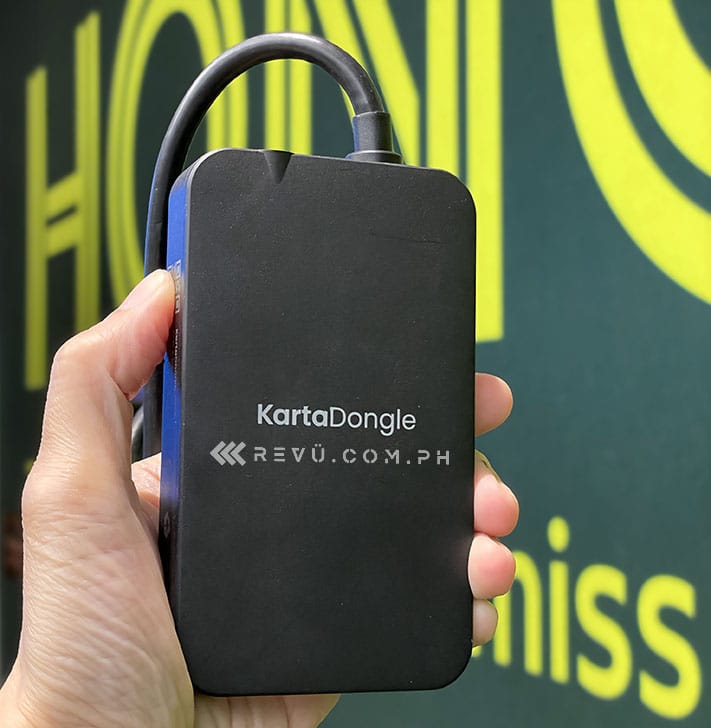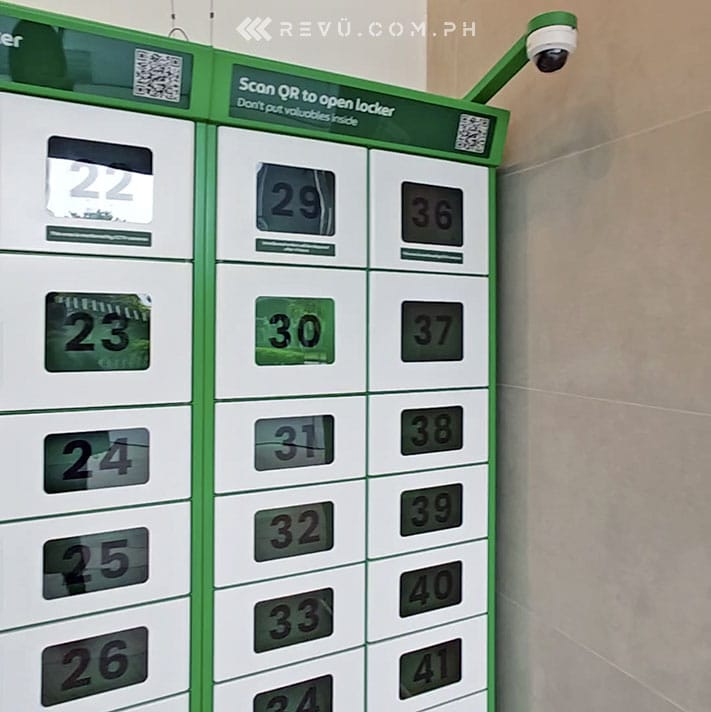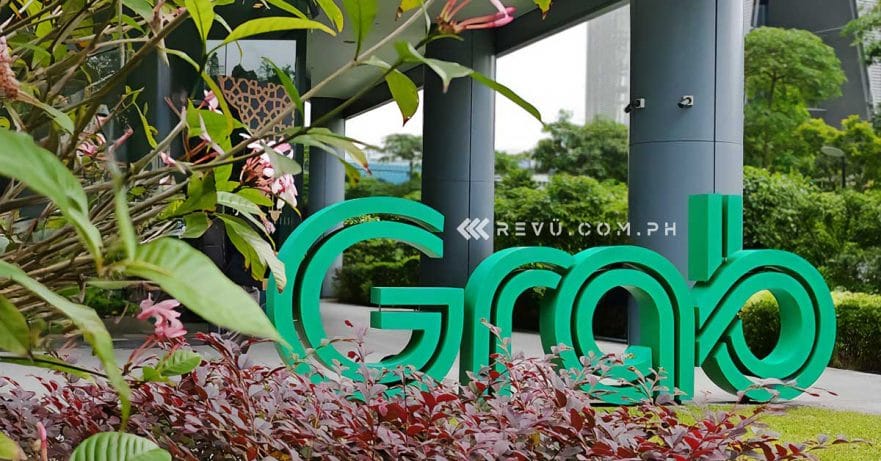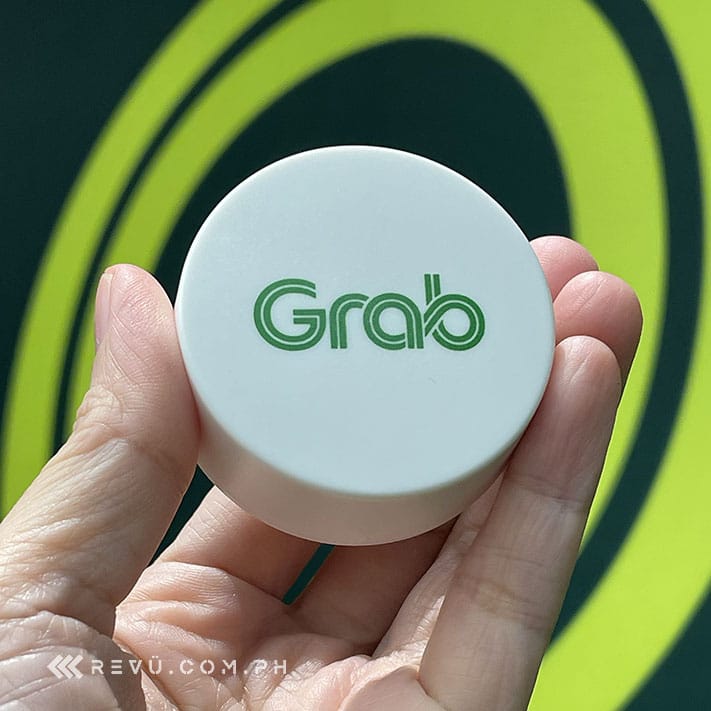Grab isn’t just a ride-hailing and food-delivery giant; it’s also increasingly focused on in-house hardware solutions.
Forget the app for a moment. The core innovation lies in the custom-designed hardware their teams are deploying across Southeast Asia — ingenious gadgets like the KartaCam 2 and even Bluetooth beacons — all aimed at one goal: a more precise, efficient, and ultimately, better Grab experience.
We delve into some of the tech powering your next ride and your next meal, which we at Revü saw for ourselves when we visited Grab’s headquarters in Singapore right after the GrabX launch event.
KartaCam 2
Grab’s ambition to build its own mapping platform, GrabMaps, has always been a decidedly ground-level affair. There are no expensive survey vehicles and protracted data collection here. The backbone of the endeavor has been the humble KartaCam, essentially ruggedized action cameras strapped onto the helmets of motorcycle riders navigating the streets of Manila or affixed to the dashboards of ride-hailing cars threading through Jakarta’s gridlock. These devices, carried by Grab’s own driver-partners as they go about their daily routines, have quietly amassed a staggering library of street-level imagery, billions of data points that paint a uniquely Southeast Asian picture.
The company has significantly sharpened that picture with last year’s introduction of the KartaCam 2. Building on the lessons learned from its predecessors, the original KartaCam and the panoramic KartaCam360, the current iteration is a leap forward in both image quality and location accuracy. Think a dramatically streamlined setup process.
The gains aren’t just about convenience. The KartaCam 2 boasts a quartet of high-resolution 48-megapixel sensors, delivering full 360-degree capture both horizontally and vertically. The richer visual data, coupled with an upgraded GPS system that polls location data 10 times more frequently, results in a far more precise and context-aware map. Imagine the difference in navigating the often-unmarked alleyways of a barangay in Quezon City with location data that updates in near real-time.
With KartaCam 2’s LiDAR compatibility, Grab can capture detailed spatial information, essentially creating a 3D model of the streets it surveys. This level of detail could be transformative, offering not just better navigation but potentially powering a new generation of location-aware services within the Grab ecosystem.
The usage of KartaCam 2 underscores a strategic advantage for Grab in the region. Unlike global mapping giants often playing catch-up, Grab’s localized approach allows it to nimbly adapt to the breakneck pace of development in cities like Taguig, where condominiums can sprout up seemingly overnight. And by empowering its driver-partners to be the eyes on the ground, Grab taps into a vast, distributed network capable of capturing the nuances of Southeast Asian urban landscapes in a way that traditional mapping methods simply cannot. This isn’t just about building a map; it’s about building a map by Southeast Asia, for Southeast Asia.
KartaDongle
While the helmet-mounted KartaCams provide Grab with crucial street-level views, navigating Southeast Asia’s complex cities and varying terrains requires a different kind of intelligence — one that can maintain accuracy despite tall buildings blocking signals and dense vegetation obscuring the sky. Enter the KartaDongle, a deceptively simple-looking device that plugs into a vehicle’s onboard diagnostics port, quietly working to refine GrabMaps with a level of precision that goes far beyond your average smartphone GPS.
Launched in 2022, the KartaDongle goes beyond a basic location tracker. Its integrated GPS offers four times the accuracy of typical phone GPS, a major benefit in cities like Jakarta where tall buildings disrupt satellite signals, or in areas outside Kuala Lumpur where dense tree cover can block them. This enhanced positional awareness is about understanding the nuances of the road network, identifying those elusive U-turn slots on busy thoroughfares that a less precise system might miss, potentially saving both time and money for passengers heading to, say, a sprawling mall in Ortigas.
Beyond navigation, the KartaDongle uses vehicle diagnostics to gather real-world data. For example, by tracking wiper usage, it provides Grab with near real-time information about where it’s raining, which is particularly valuable in a region where localized downpours can quickly change the demand for rides. In a place like Metro Manila, where weather forecasts can sometimes lag behind the sudden onset of a habagat downpour, this granular, real-time weather data provides a huge advantage in anticipating and meeting rider needs. Grab claims this data can boost weather accuracy from a mere 25% to a much more reliable 75%.

The KartaDongle is also proving instrumental in tackling the perennial frustration of inaccurate pickup and drop-off points. Anyone who has tried to navigate the multiple entrances and exits of a sprawling condominium complex in Makati City knows the pain of a driver circling fruitlessly. The KartaDongle, with its precise location data, can automate the mapping of these complex meeting points, a task that would otherwise be a time-consuming manual effort. This promises fewer missed connections and less stress for both riders and drivers alike.
Initially rolled out to GrabRentals fleets across Singapore, Indonesia, and the Philippines, the KartaDongle represents Grab’s commitment to building a map that understands the intricacies of Southeast Asia. This highlights how significant technological improvements can often operate behind the scenes, making daily commutes smoother, more efficient, and better adapted to the specific challenges of navigating this dynamic region.
Bluetooth beacons
In on-demand food delivery, every minute counts. For Grab, that means not just efficiently routing riders across the chaotic sprawl of areas like Metro Manila, but also precisely timing their arrival at a restaurant to get that steaming hot ramen just as it’s being bagged. Traditionally, Grab has relied on drivers tapping buttons in their app to signal their arrival and pickup. But human fingers aren’t always the most precise instruments when juggling a delivery bag and navigating a bustling eatery. Enter the humble Bluetooth beacon, a small, unassuming piece of tech with the potential to significantly refine Grab’s food prep-time predictions.
Think of these beacons as digital breadcrumbs strategically placed near the pickup counters of GrabFood merchants. These low-cost, battery-sipping devices, already commonplace in various industries, have been deployed across Southeast Asia. The premise is simple: When a Grab driver-partner, with Bluetooth enabled on their phone, approaches the designated pickup zone, their app silently registers the beacon’s signal, automatically logging their arrival time with far greater accuracy than a manual button press.
This seemingly minor technological tweak has significant downstream effects. By gathering more precise arrival data, Grab’s machine-learning algorithms can better learn the food preparation times of individual restaurants. This, in turn, allows the system to dispatch drivers at the optimal moment, minimizing their waiting time at the establishment. More efficient pickups for drivers translate directly to faster deliveries and fresher food for hungry customers eagerly awaiting their noodles or tapa.
While the initial pilot focused on high-volume locations in Singapore, Grab has since expanded its beacon deployment to over a thousand locations there and initiated trials in major urban centers across the region, including Jakarta, Kuala Lumpur, Manila, Ho Chi Minh City, and Bangkok. Interestingly, the rollout hasn’t been without its regional nuances. As Grab’s Geo team has discovered, Bluetooth usage isn’t uniform across Southeast Asia. While Singaporean riders are often Bluetooth-savvy, their counterparts in other markets sometimes require reminders to keep the feature active.
Ultimately, deploying these inconspicuous Bluetooth beacons highlights Grab’s focus on using data to improve efficiency. This demonstrates how even small technological solutions, when strategically implemented across a large network, can lead to a smoother, more reliable experience for everyone — from drivers navigating rush hour to customers awaiting their food. These small devices, by automatically transmitting data, aim to streamline the food-delivery process.
GrabFood lockers
While on-demand food delivery offers significant convenience, the handover process can sometimes be inconvenient. Situations like receiving calls in the middle of important meetings, delivery riders navigating complex building layouts in areas like Bonifacio Global City, or cluttered reception areas can detract from a seamless experience. To address these issues, Grab is implementing a solution that combines physical infrastructure with technology: smart food lockers.
Piloted in Singapore, Indonesia, and Thailand, and with plans underway for deployment in cities in Malaysia and the Philippines, these aren’t your dusty PO boxes. Instead, Grab’s IoT team has crafted a network of digitally managed cabinets designed to streamline that final step of the food-delivery process. For the hungry customer, the experience is integrated directly into the familiar Grab app. Opting for a locker delivery is as simple as selecting it as the destination. Once the rider deposits the order, a notification pings the user, who can then saunter down at their convenience, smartphone in hand. A quick scan of a QR code grants access to their designated compartment, ensuring no accidental pilfering of someone else’s order.

Beyond the convenience for the end-user, these lockers offer a significant boon for Grab’s army of delivery riders zipping through the congested streets of Southeast Asian megacities. Every minute spent waiting in a building lobby, every wrong turn in a sprawling Mandaluyong residential complex, chips away at their earning potential. The lockers provide efficient drop-off locations, enabling riders to complete more deliveries per day, independent of individual customer availability. This efficiency not only boosts their income but also potentially eases traffic congestion around busy commercial hubs during peak lunch and dinner rushes.
Interestingly, Grab also seems to have found an enthusiastic audience in property owners themselves. Imagine the relief for building managers in bustling office towers or the administrators of sprawling university campuses, no longer having to contend with crowded lobbies and the logistical headache of managing countless food deliveries. The smart lockers offer a neat, organized solution, freeing up reception and security staff to focus on their core responsibilities.
While still in the early stages of wider rollout, the positive feedback from users and property owners in the trial markets suggests that Grab’s bet on these smart food lockers might just be a winning one. It’s a pragmatic approach, leveraging connected hardware to solve a very real-world logistical challenge in dense urban environments. As Grab continues to refine both the hardware and software of these lockers, they could very well become a ubiquitous sight in Southeast Asia’s major hubs, quietly and efficiently taking that last bit of friction out of the increasingly indispensable world of food delivery.
The continuing drive: Powered by innovation
From the tireless drivers equipped with mapping cameras to the strategically placed lockers streamlining food delivery, Grab’s investment in custom hardware underscores a fundamental belief: To truly serve Southeast Asia, you have to understand it from the ground up.
These aren’t just incremental improvements; they’re building blocks for a more efficient, more accurate, and ultimately, more seamless Grab experience tailored to the unique realities of this complex region. As these technologies continue to evolve and expand, they offer a glimpse into a future where every ride and every delivery is just a little bit smarter.
Here‘s your source for the latest Grab news and announcements.
Share this Post





